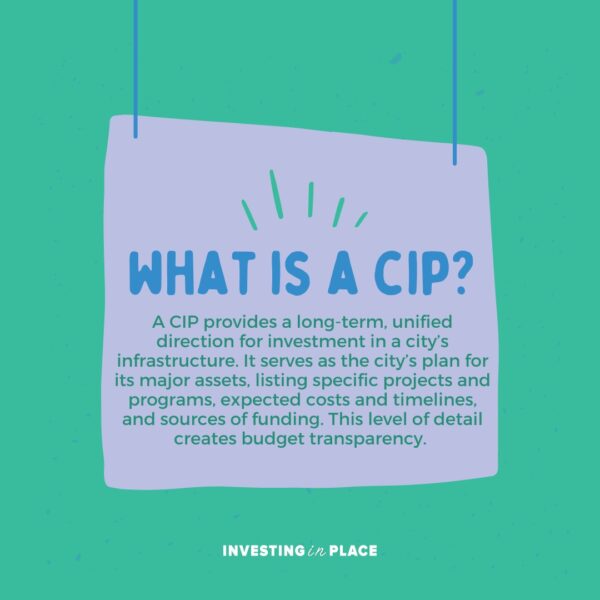The City of LA has roughly $1 billion each year for public works and transportation (primarily through the local return of four countywide transportation sales taxes), and even more from state and federal funds.
Where does all that money go? The sad, short (and true!) answer is: No one knows.
No one (truly, no one) has a clear picture of where BILLIONS of public works and transportation funds in the City of Los Angeles have gone over the years, and there is no publicly accessible funding plan for past, present, or future investments.
You’d have to spend hundreds of hours scouring dozens of spreadsheets buried within multiple City department websites and internal documents to start to uncover the answer. We’ve done that – since 2018 – and we still can’t tell you much about where this public money goes.
What we can tell you is that the process to allocate and spend these funds is opaque at best, often left to political interests and bureaucratic legacies that keep money flowing without focusing on the outcomes we say we want for our city.
It has been said, Los Angeles has the largest public works program in the nation, yet still has broken, unpassable sidewalks and for many, no viable, reliable, and safe transportation options… other than driving (and that isn’t always safe).
That’s why:
- Los Angeles needs a Capital Infrastructure Plan (CIP).
- Investing in Place has made developing a CIP our #1 priority.
To get there, though, we need to recognize what it takes to change the way this spending is connected to who’s in power. To make a CIP a reality for Los Angeles, we must partner with fellow Angelenos who care about the future of the City, hold planning workshops, and roll out an educational campaign about CIPs and how other cities develop theirs.
We can no longer continue on the path we’ve been on for decades that has lacked a clear vision and funding plan to achieve the shared outcomes so many are calling for.

LA is Dysfunctional Without a Plan
In 2017, FUSE Fellow Laila Alequresh identified the lack of a Capital Infrastructure Plan (CIP) as a leading problem in Los Angeles’ management of public space. She said Los Angeles is the only major city in the United States without a CIP.
A CIP creates a multiyear public works and transportation project list and budget that will help people understand what is being planned and prioritized, and what tradeoffs are being made in their own communities. This list will include projects across the city and across departments, revealing how taxpayer funding is planned to be invested. It will be publicly accessible.

Since LA does not have a CIP, public infrastructure planning, design, and construction is handled separately by different agencies and policymakers – and is planned one year at a time rather than multiple years in advance.
As a result, the City is inefficient and ineffective with our public dollars.
And when communication and consensus breaks down, our local government struggles to provide basic services. A prime example: The City’s sidewalk repair program. For example, in Fiscal Year 2021 there was a backlog of requests for 4,000 access ramps (also known as curb cuts), and only 615 (or just 15%) had been completed.
Municipal and Good Governance Experts Have Known This for Years
Several leaders have been calling for a CIP for years, even before the FUSE report.
Nearly a decade ago in 2013. Councilmember Bob Blumenfield introduced a motion directing the City to create a Capital Infrastructure Strategic Plan. The motion directed the City to prioritize projects, identify funding, create mapping tools, and facilitate public transparency. As part of the motion, the Chief Administrative Office (CAO) committed to an interdepartmental working group to develop this plan.
Also starting in 2013, Councilmember Joe Buscaino and others championed “Save Our Streets LA,” a $3 billion bond-turned-sales tax ballot measure to fund emergency street repairs. This proposal didn’t gain enough traction for a 2014 vote, and the Countywide Measure M soon overshadowed it. But it brought renewed awareness to the dire conditions of so many Los Angeles streets.
Investing in Place worked on a similar motion in 2021, to define and measure equity in project lists. That process is currently being led by the Chief Administrative Office.
But it’s 2022, and there’s still no plan.
The Time is Now
It’s time to create a long overdue CIP for the City of Los Angeles.
Just last month, on the infamous leaked audio of LA City Councilmembers Nury Martinez, Kevin de León and Gil Cedillo, you can hear the Councilmembers plotting about various city assets behind closed doors. They are not stewarding those assets on behalf of the public, they are using those assets to gain and maintain power and control for themselves.
This reveals a massive vulnerability for the parts of the city that are actually owned by the public.
But it doesn’t have to be this way…
What does a CIP actually do for the City?
- A CIP helps distribute power. Developing and adopting a CIP can distribute power, knowledge, and coordination among agencies, policymakers, and people throughout the city. Without a CIP, it’s almost impossible to know about planned projects and/or opportunities.
- A CIP helps facilitate local hire. It has the potential to create jobs. With a forward-looking, committed project list, local job centers and apprenticeships can coordinate to develop a pipeline to ensure local hires and align with upcoming work.
- A CIP prioritizes equity. For too long, the City Council’s approach for allocating public works and transportation funds has been to “divide by 15”: funds are divided equally among the 15 City Council districts. But equal is not equitable. Many LA neighborhoods have borne multi-generational racism, displacement, violence, segregation, and greed. Without a plan that identifies priorities and projects over the next 10 years, there’s no accountability to make sure LA prioritizes the needs of communities of color and low-wage workers, in order to account for this history.
- A CIP provides transparency. Because the City has no overarching plan with project lists, budgets, and a timeline for implementation, the public does not know where our own money goes and to what purpose: we do not know how much each City department gets, and what they are supposed to do with it.
- A CIP helps implement the Mobility plan. In 2015, Los Angeles adopted a new Mobility Plan that included a Bicycle Enhanced Network, a Neighborhood Enhanced Network, a Transit Enhanced Network, and Pedestrian Enhanced Districts. These networks are “aspirational” – meaning they set the vision for modal priorities on corridors, but they require further conceptual design and project development and prioritization. A CIP would turn those mapped networks into plans: specific projects with assigned funding and a timeline for implementation.
- A CIP enables coordination. Los Angeles has up to 11 agencies working within the City’s public right-of-way, sometimes working toward the same outcomes but without a coordinated approach. Each bureau and department does things differently, often competing with each other for grants and often pursuing opposing visions for the streets and sidewalks. The CIP would give a clear focus and coordinated project list that everyone is working from.
- A CIP takes work. The reason a CIP has never been adopted in Los Angeles when cities like Boston, Chicago, Long Beach, New York, San Diego, and Seattle have one is because it takes work. Once the city decides to do this, financial and operational experts will need to collaborate to untangle decades of processes, data, and tradition. This won’t be easy, but it can be done.
What you can do next:
- Join our introductory workshop via Zoom, November 15, 3 p.m. – 4 p.m. RSVP today!
link here. - Read our summary: What is a CIP?
- Check out our previous posts on this topic:
- Who fixes LA streets (and sidewalks)? A quick primer.
- How can we fix our right-of-way, the right way?
- Even casino heists need a plan.
- Look for our next post: Why LA’s current budgeting process is not getting us the outcomes the city needs for public works and transportation.
- Support us: Join the dozens of individual supporters and foundations like The California Endowment, The Energy Foundation, and TransitCenter to underwrite this work by clicking here to make a donation.
We hope you’ll join us!










You must be logged in to post a comment.